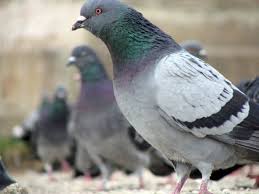New research suggests that some birds may know who their human friends are, as they are able to recognize people’s faces and differentiate between human voices.
Being able to identify a friend or potential foe could be key to the bird’s ability to survive.
Research shows that pigeons can reliably discriminate between familiar and unfamiliar humans, and that they use facial features to tell people apart.
The team trained a group of pigeons to recognise the difference between photographs of familiar and unfamiliar objects. These pigeons, along with a control group, were then shown photographs of pairs of human faces. One face was of a person familiar to the birds whilst the other was of someone they had not seen before.
The experimental group birds were able to recognise and classify the familiar people using only their faces, whereas the birds without prior training failed. The results show that pigeons can discriminate between the familiar and unfamiliar people and can do this on solely using facial characteristics.
Lincoln’s lead researcher, Dr Anna Wilkinson, said: “Such advanced cognitive processes have rarely been observed in pigeons and suggest that they not only recognise individual humans but also know who they know — something which could be very important for survival. Some humans feed pigeons, others chase them. To know individuals and act appropriately to them is enormously advantageous.”
In a separate study, the team investigated the ability of carrion crows to differentiate between the voices and calls of familiar and unfamiliar humans ie. those outside of their own species. Previous research has focused on crows’ ability to recognise and communicate with their own species.
The crows responded significantly more often to unfamiliar than familiar human voices and, conversely, responded more to familiar than unfamiliar jackdaw calls. According to the research team, the results provide the first evidence that birds can discriminate between familiar and unfamiliar individuals using auditory stimuli.
Source: Science Daily
N.H.Kh

